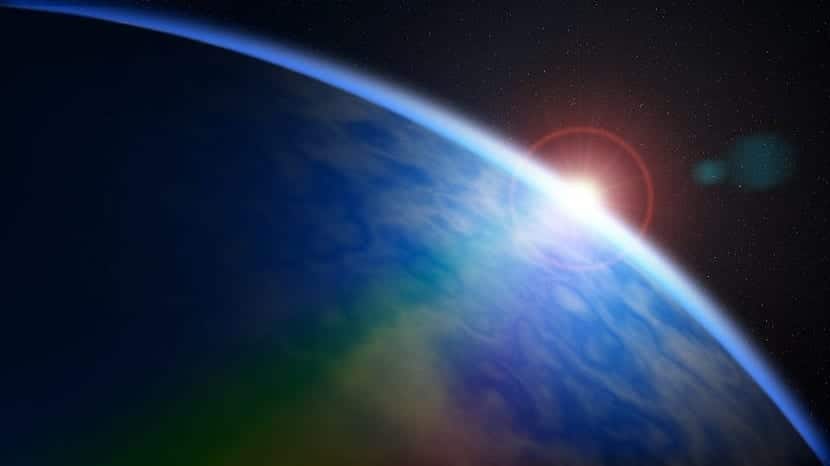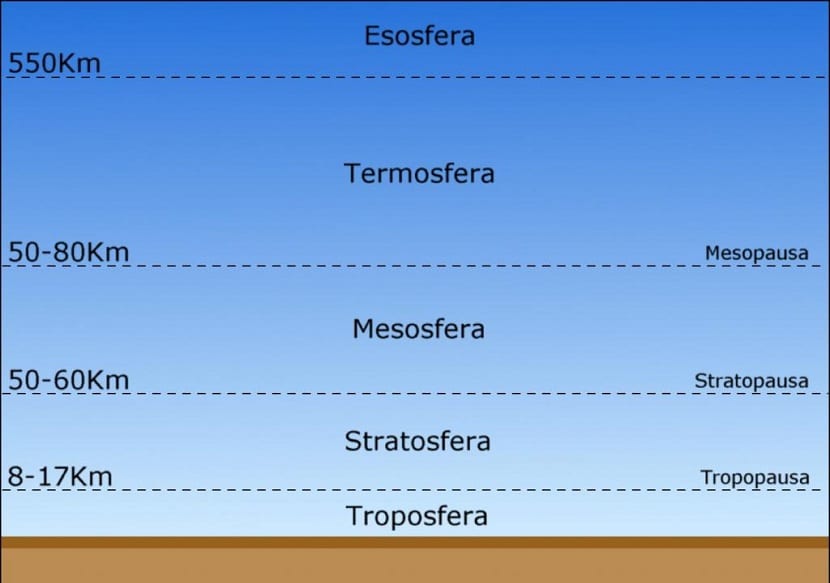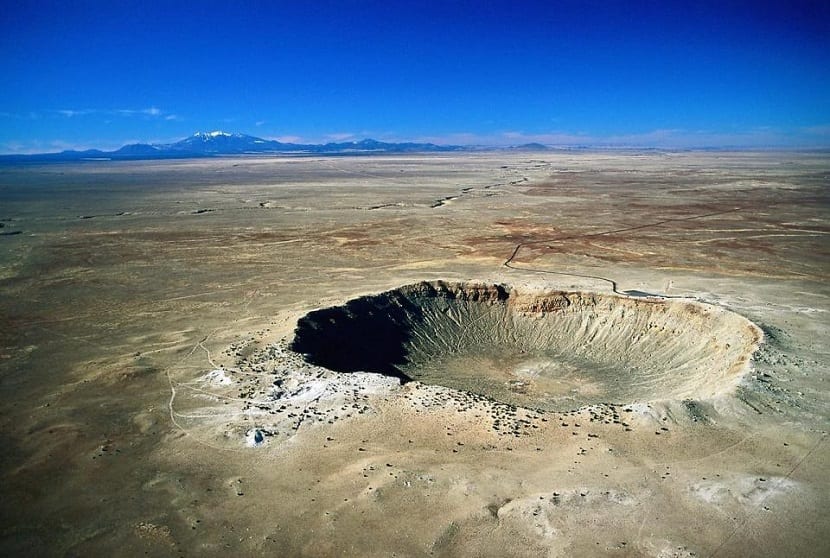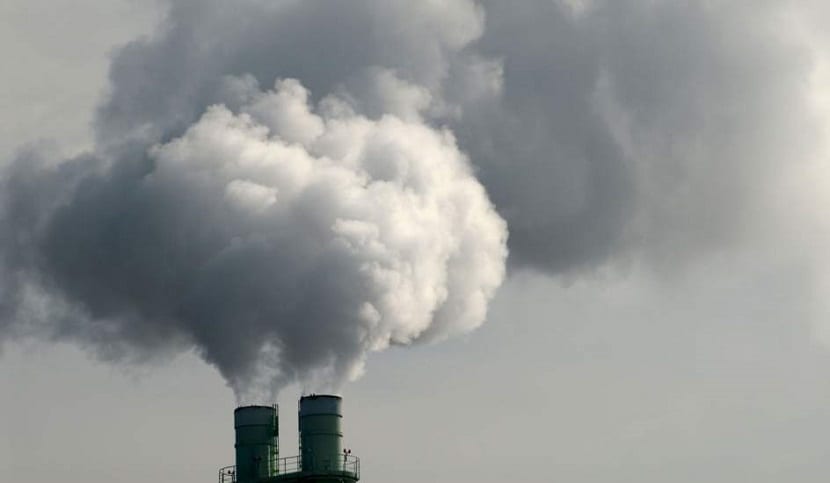
On our planet we can survive thanks to a layer of different composition of gases that surrounds the entire Earth. This layer remains on Earth thanks to gravity. It's about the earth's atmosphere and it is difficult to determine exactly its thickness, since the gases that compose it become less dense with height, until practically disappearing a few hundred kilometers from the surface.
The atmosphere fulfills various functions for life on the planet and if it weren't for it, we would not be able to have life as we know it. Do you want to know everything about the atmosphere?
Composition of the atmosphere
The atmosphere is made up of a mixture of gases, most of which are concentrated in the so-called homosphere, which extends from the ground up to 80-100 kilometers high. In fact, this layer contains 99,9% of the total mass of the atmosphere.
Among the gases that make up the atmosphere, Nitrogen (N2), Oxygen (O2), Argon (Ar), Carbon Dioxide (CO2) and water vapor must be highlighted. It is important to know that the concentration of these gases varies with height, the variations in water vapor being especially pronounced, which concentrates especially in the layers near the surface.
The presence of the gases that make up the air is essential for the development of life on Earth. On the one hand, O2 and CO2 allow the carrying out of the vital functions of animals and plants, and on the other, the presence of water vapor and CO2, allow temperatures on Earth to be adequate for the existence of the lifetime. Water vapor and CO2, along with other less abundant gases such as methane or ozone, are the so-called greenhouse gases. Solar radiation can pass through these gases without difficulty, but the radiation emitted by the Earth (after heating with solar energy) is partially absorbed by them, without being able to escape into space in its entirety. Thanks to the existence of this greenhouse effect, we can live with a stable temperature. If not for the presence of these gases that retain heat and that generate this effect, Earth's average temperatures would be below -15 degrees. Imagine at those temperatures almost all year round, life would be impossible on Earth as we know it.
In the atmosphere, the density, composition, and temperature of the air vary with height.
Layers of the atmosphere

The atmosphere is divided into several layers according to its composition, density and temperature. Here is a brief summary of the layers of the atmosphere.
Troposphere: It is the lowest layer, in which life and most meteorological phenomena develop. It extends to an altitude of approximately 10 km at the poles and 18 km at the equator. In the troposphere, the temperature decreases gradually with height until reaching -70º C. Its upper limit is the tropopause.
Stratosphere: In this layer, the temperature increases until it reaches approximately -10ºC at an altitude of 50 km. It is in this layer where the maximum concentration of ozone is located, the "ozone layer", a gas that by absorbing part of the ultraviolet and infrared radiation from the Sun allows the existence of suitable conditions for life on the Earth's surface. The top of this layer is called the stratopause.
Mesosphere: In it, the temperature decreases again with height to -140 ºC. It reaches an altitude of 80 km, at the end of which is the mesopause.
Thermosphere: It is the last layer, which extends up to several hundred kilometers of altitude, presenting increasing temperatures up to 1000 ºC. Here the gases have a very low density and are ionized.
Why is atmosphere important?

Our atmosphere is important for several things. More than important, we should say that it is necessary. Thanks to the atmosphere, life can develop on our planet, since it absorbs a large part of the ultraviolet radiation from the sun in the ozone layer. In case a meteor enters orbit with the Earth and is going to hit us, the atmosphere It is responsible for disintegrating them into dust due to the friction they suffer when making contact with the air. In the absence of the atmosphere, the collision speed of these objects would be the sum of their own space inertial speed (measured from our planet) plus the acceleration caused by Earth's gravitation, so it is vitally important to have it.
Mention should also be made of the fact that the earth's atmosphere has not always had the same composition. For millions of years, the composition of the atmosphere has been changing and generating other types of life. For example, when the atmosphere had barely any oxygen, it was methane gas who regulated the climate and the life that prevailed was that of methanogens. After the appearance of cyanobacteria, the amount of oxygen in the atmosphere increased and made possible different forms of life such as plants, animals and humans.
Another important function of the atmosphere is the magnetosphere. This is an area of the atmosphere found in the outer region of the Earth that protects us by deflecting solar winds loaded with electromagnetic radiation. It is thanks to the Earth's magnetic field that we are not consumed by solar storms.
The atmosphere has great relevance in the development of biogeochemical cycles. The current composition of the atmosphere is due to photosynthesis carried out by plants. It is also the one that controls the climate and the environment in which human beings live (in the troposphere), generating meteorological phenomena such as rain (from which we get water) and having the necessary concentration of nitrogen, carbon and oxygen.
Man's action on the atmosphere

Unfortunately, the human being is causing a change in the composition of the atmosphere. Due to industrial activities, greenhouse gas emissions such as carbon dioxide and methane and nitrogen oxide emissions that cause acid rain are increased.
The continuous increase in these greenhouse gases is causing global warming. Average temperatures in all parts of the planet are increasing, destabilizing the balance of all ecosystems. This is causing a climate change that is triggered in a modification of the weather patterns. For example, climate change increases the frequency and intensity of extreme weather events such as hurricanes, tornadoes, floods, droughts, etc. The cycles of phenomena such as El Niño and La Niña are also being altered, many species are moving or dying due to changes in their habitats, the ice of the polar ice caps is melting with the consequent rise in sea level , etc.
As you can see, the atmosphere plays a fundamental role in the life of our planetThis is why we must combat climate change and ensure that greenhouse gas concentrations become stable as in the past, before the industrial revolution.

I liked the explanation about the different changes in the atmosphere